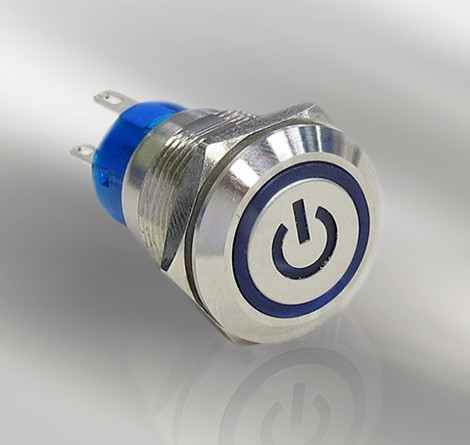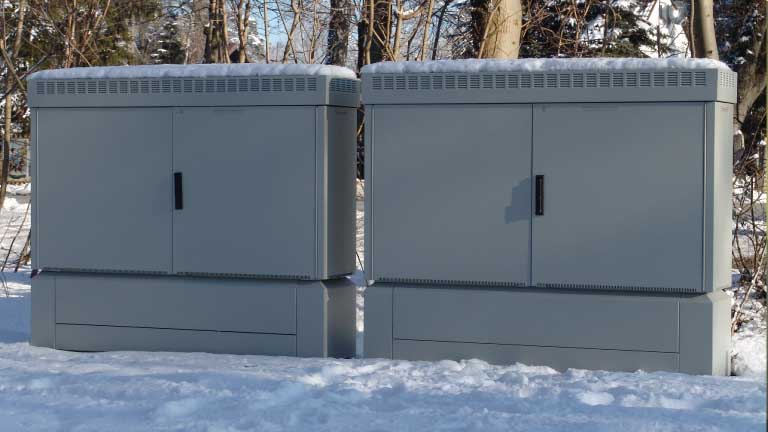Protecting outdoor electronics against vandals

Electronics used in outdoor locations have to contend with harsh weather conditions, including direct sunlight, rain, ice, and even earthquakes. But that’s not the whole story. A significant threat is posed by humans with less than honourable intentions, including vandals and thieves. This applies to infrastructure as well as systems that are used by the general public, such as kiosks, ticket machines and lifts.
Telecoms broadband cabinets, ubiquitous in residential public areas, are vulnerable to vandalism. Also particularly at risk are infrastructure assets housed in railway trackside cabinets, especially as these are often hidden away out of sight behind bushes or in remote locations. Thankfully, secure cabinets are available that can withstand not only the harsh environmental conditions faced by outdoor infrastructure systems, but also dissuade vandals and guard against thieves. These cabinets are often secured with multi-point locking systems, and incorporate anti-vandal features such as protective strips along the edges of the doors making it harder to wedge tools in. There may also be security hinges, which have the pin sealed within the body of the hinge so it’s inaccessible from the outside.
For example, Schroff offers three ranges of corrosion-proof aluminium IP55 outdoor cabinets specially designed for these applications. All three ranges have a 3-point locking system, which secures the cabinet door in three places (top, right or left hand edge, and bottom). This presents more of a challenge to thieves than single point locks. Other security features include secure hinges and fixings, which are inside the cabinet so they cannot be accessed while the cabinet is locked.
|
Schroff's Unibody and Modular secure cabinets keep vandals and thieves away from telecoms and trackside infrastructure |
The Comline series is Schroff’s most basic design, presenting an affordable option. The Unibody and Modular series offer removable cladding for easy access to the electronics and additional thermal management features. These ranges both have double wall construction, with the shape of the inner wall designed to maximise the surface area (“passive meander” design) – up to 600-800W cooling can be achieved at a temperature difference of 25K with this entirely passive system. Often these passive features alone are enough to keep electronics cool when subject to direct sunlight.
Publically accessible systems, such as lift controls, entry phones, pedestrian activated road crossings, ticket machines and ATMs should also be afforded a level of protection against humans. The challenge here is not simply robustness/security of the enclosure since these systems must have some kind of control panel or interface.
Anti-vandal switches for these systems typically take the form of low-profile stainless steel or hard plastic push buttons that can handle rough treatment as well as deliberate attempts at damage. They are also usually protected against dust and moisture to a high level to withstand their outdoor environment. This type of panel-mount switch is held in place by a robust nut on the reverse of the panel that can’t be accessed from the front.
 |
For example, TE Connectivity offers anti-vandal switches as part of its Alcoswitch range (right). These parts are all sealed to IP67 and come in single pole and double pole versions. They feature LED indicators in spot, ring or power logo configurations and are available in 16, 19 and 22 mm sizes. Contact rating is 2A, 36 VDC for the 16 mm switch and 3A, 250 VAC for the 19 and 22 mm versions.
Outdoor systems such as utility meters may make use of some of the same vandal-proofing features, but they also have to withstand the specific threat of tampering. Unscrupulous homeowners may try to tamper with the meters to try and reduce the amount of energy usage recorded. A common way of doing this is to introduce a strong magnet near the electricity meter to try and disrupt the current transformer the meter uses to measure how much electricity is used: the strong magnet saturates the transformer’s core, essentially blinding it to how much current is being drawn.
Meters generally employ a level of magnetic shielding to try and prevent this kind of tampering. They may also use magnetic sensors, which, in the presence of strong magnetic fields, can be used to alert the utility of suspicious behaviour.
In summary, while weather conditions, extreme temperatures and moisture ingress are a huge challenge for outdoor electronics, humans also pose a significant threat. Anti-vandal components include sturdy, secure cabinets for infrastructure, low-profile stainless steel switches and tamper-detection sensors. All are available from Avnet Abacus; get in touch with our technical experts to discuss your requirements here.
Engineering Services
Ask an expert
Have a question? Our regional technical specialists are on hand to help




